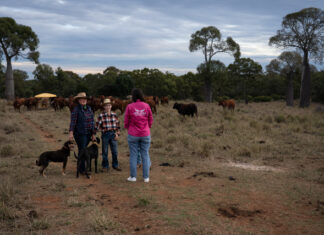Improved affordability of agricultural fertiliser is set to prompt recovery in demand and application rates by farmers next season, Rabobank says in a recently-released report.
In its Australian Fertiliser Outlook 2024/25, the specialist agribusiness bank says Australian farm fertiliser consumption had declined 20 per cent in 2022, as the agricultural sector grappled with expensive farm inputs due to Covid-19 and the Russia-Ukraine war.
However, with prices now average, farmers seeking to replenish soil nutrients amid another potentially good winter crop planting next year should see a strong recovery in fertiliser demand,
This is according to report author, Rabobank farm inputs analyst Vitor Pistoia.
“In the past few years, economic shocks, Covid-19, the Russia-Ukraine war and other factors caused fertiliser prices to hit historic highs,“ he said.
“This triggered farmers to change farm practices, with many trimming fertiliser application rates.
“In Australia, fertiliser consumption in 2022 declined by 20pc year-on-year, with different nutrients showing different magnitudes of reductions. For example, nitrogen showed a smaller cut than phosphate, potash and sulphur.”
Mr Pistoia said farm input costs began to decline from mid-last year, allowing fertiliser affordability to bounce back close to historically-average levels, despite significant drops also being experienced in the prices of agricultural commodities such as grain, oilseeds, beef and dairy.
Mr Pistoia said the “largest price relief” for fertiliser had come late in the buying period for the 2023/24 cropping season, so a recovery in demand and application rates was most likely to be seen in the coming 2024/25 season.
Further support for a recovery in demand would also flow from farmers wanting to replenish depleted soil nutrients, after three years of good crop yields, he said.
While another large winter crop planting next year – above the 23-million-hectare mark, weather-permitting – would further support demand recovery.
Mr Pistoia said Rabobank’s expectations of a strengthening Australian dollar in the coming 12 months should also make purchase of imported goods, like fertilisers and ag chemicals, more affordable.
The report said anticipation of strong demand for fertiliser for next cropping season may drive Australian farmers to change their usual procurement strategies and purchase ahead to secure supply.
“Anticipatory procurement is a strong contender as a ‘budget saviour’,” Mr Pistoia said.
“By the end of the year, the majority of farmers are focused on harvest, which typically results in a period of low fertiliser demand.
“This could lead to buying opportunities for farmers in Q4 2023, with early buyers potentially avoiding a period of much stronger demand in Q1 2024, the usual procurement period.”







